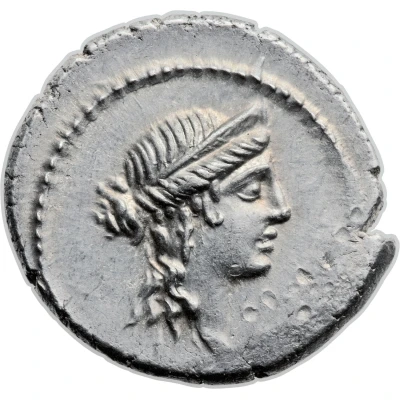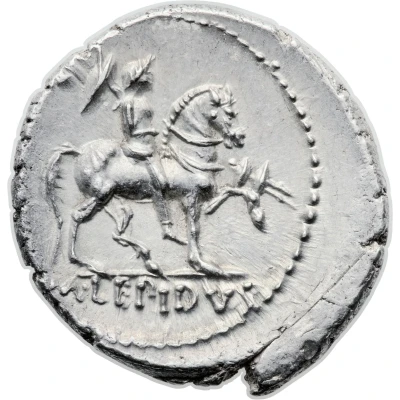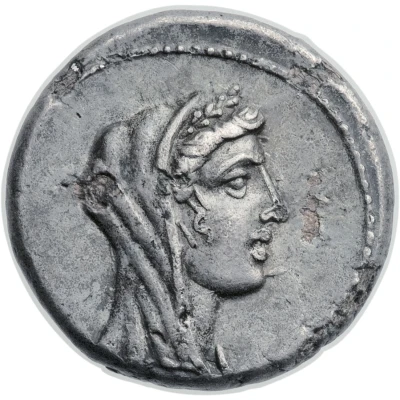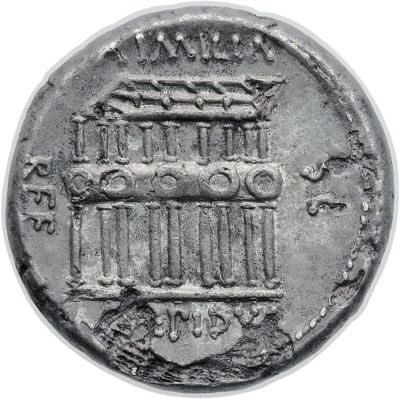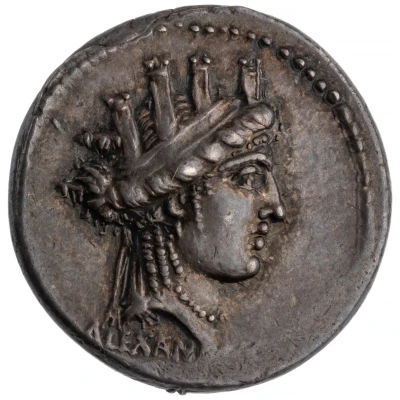
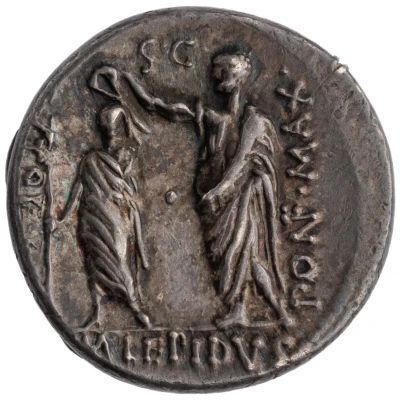

© American Numismatic Society (ANS)
Denarius Aemilia: Marcus Aemilius Lepidus; ALEXANDREA / PON͡F·MAX TVTOR·REG S·C M·LEPIDVS 61 BC
61 BC year| Silver | 3.84 g | 18 mm |
| Issuer | Rome › Roman Republic (509 BC - 27 BC) |
|---|---|
| Period | Republic (509 BC - 27 BC) |
| Type | Standard circulation coin |
| Year | 61 BC |
| Value | Denarius (1) |
| Currency | Denarius of 16 Asses (141 – 27 BC) |
| Composition | Silver |
| Weight | 3.84 g |
| Diameter | 18 mm |
| Shape | Round (irregular) |
| Technique | Hammered |
| Orientation | Variable alignment ↺ |
| Demonetized | Yes |
| Updated | 2024-10-06 |
| Numista | N#391371 |
|---|---|
| Rarity index | 100% |
Reverse
Togate figure on right crowning figure on left, who wears chiton and holds staff. Border of dots.
Script: Latin
Lettering: PON͡F·MAX TVTOR·REG S·C M·LEPIDVS
Comment
The gens Aemilia, originally written Aimilia, was one of the most ancient patrician houses at Rome. The family was said to have originated in the reign of Numa Pompilius, the second King of Rome, and its members held the highest offices of the state, from the early decades of the Republic to imperial times. The Aemilii were probably one of the gentes maiores, the most important of the patrician families.
Interesting fact
The Denarius coin , which features Marcus Aemilius Lepidus, was minted during a time of great political upheaval in Rome. Lepidus was a prominent politician and military leader who played a key role in the fall of the Roman Republic and the rise of the Roman Empire. In fact, he was one of the triumvirs, along with Julius Caesar and Pompey, who were responsible for the death of Julius Caesar and the subsequent power struggle that led to the end of the Republic. This coin, which features Lepidus' name and title, was minted during his time as Pontifex Maximus, or high priest, of Rome. It's an interesting example of how political and religious power were closely intertwined in ancient Rome.
